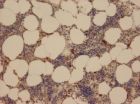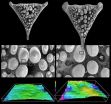(Press-News.org) What effect does a TV advert have on a viewer? How does it bring about a change in their knowledge, emotions or intentions? These questions have existed alongside advertising ever since it began. Through a psycho-physiological study developed jointly by El Bureau de la Comunicación, the Tecnalia Centre for Applied Research, and the UPV/EHU, it has been possible to measure the emotional response of a person to a series of television adverts.
The aim of the study, carried out for the first time entirely in the Basque Autonomous Community (region), was to shed some light on two main hypotheses: On the one hand, adverts with a social content that use negative images that show violence or disgust achieve a greater emotional impact that those with a content based on positive attitudes, and on the other, long commercials succeed in evoking a stronger emotional intensity than short ones.
Firstly, it was confirmed that long commercials are more effectively self-explained and adjust better to the anticipated emotions of the spectator than their short counterparts which evoke greater emotional "confusion". Longer adverts seem also to elicit stronger emotional responses in the person which is also true for negative social adverts. Secondly, adverts on social or moral behaviour (in both the positive and negative categories) achieve absolute values of emotional intensity that considerably outperform those of commercial adverts (both short and long ones).
These findings might help agencies, media organisations and advertisers to optimize the profitability of their campaigns.
40 films, 30 volunteers and a pulse meter
So far, the advances achieved by neuroscience have been based on technologies that employ cumbersome equipment that "tie" the subject to the laboratory and prevent his or her behaviour from being observed in a natural environment. Researchers at Tecnalia have devised a system that use readings from a standard device (a commercial heart rate monitor) to measure the valence of the emotions an individual experiences at a specific moment and transmit that information via a Bluetooth connection to a smartphone.
The original aim of the system is to function as a mechanism to automatically communicate emotions and thus can be used to measure the emotional response to any kind of stimulus. On this occasion we were interested in detecting reactions to a series of TV adverts with one aim in mind: to assist in the debate on whether it is advisable to give publicity on social issues a positive or negative character.
This is the first time that this technology has been used for studies in advertising and the analytical methodology was designed especially for the experiment. What is more, both the experiment and the software and systems were developed entirely in the Basque Autonomous Community (region).
The tests were conducted in two sessions with 30 volunteers each -divided into three groups of 5 people, 3 people of one gender and 2 of the other–. A heart rate monitor was fitted to each of the participants to measure their emotional valence during the screening of 40 films (10 tv spots of a social nature with a positive flavour and 10 with a negative content, 10 commercial adverts broadcast on national TV during the second half of November in their full versions, and the 10 shorter versions of these same adverts). Following the broadcast of each video sequence, a black screen was shown for one minute while each participant completed a questionnaire about the emotions he or she had experienced.
INFORMATION:
A study confirms that long commercials evoke stronger emotions
2012-04-04
ELSE PRESS RELEASES FROM THIS DATE:
Viral replication impedes the efficacy of a targeted therapy against virus-induced lymphomas
2012-04-04
Kaposi's sarcoma herpesvirus (KSHV) is a human tumor virus and an etiological agent for Kaposi's sarcoma and primary effusion lymphoma (PEL). PELs are aggressive lymphomas with reported median survival time shorter than six months after diagnosis.
Researchers at the University of Helsinki discovered that spontaneous induction of KSHV lytic replication in tumors drastically attenuated the p53-dependent apoptotic response not only to a targeted therapy (Nutlin-3) but also to genotoxic anti-cancer agents.
The findings by the research groups of Päivi Ojala (Institute of ...
Serious complications after esophageal surgery cause lasting health problems in long-term survivors
2012-04-04
Oesophageal cancer is a very serious form of cancer that, if not fatal, requires extensive surgery. A new study from Karolinska Institutet in Sweden shows that when serious complications arise after surgery for oesophageal cancer, many patients suffer other health problems, such as breathlessness, fatigue, insomnia and eating problems, for five years afterwards.
"Patients who suffer serious post-operative complications after surgery for oesophageal cancer need very close, long-term monitoring so that any problems that arise can be identified and targeted quickly," says ...
Is bioenergy expansion harmful to wildlife?
2012-04-04
Despite the predicted environmental benefits of biofuels, converting land to grow bioenergy crops may harm native wildlife. Researchers at the Helmholtz Centre for Environmental Research in Leipzig have developed a way to study the effects of increased energy crop cultivation on farmland bird populations.
"The Skylark is an indicator species for agricultural areas because it occupies many habitats of the wider countryside around the globe, breeds on the ground within fields and feeds mostly on insects" notes lead researcher, Jan Engel. "Improving the habitat suitability ...
New immune defense enzyme discovered
2012-04-04
Neutrophil granulocytes comprise important defences for the immune system. When pathogenic bacteria penetrate the body, they are the first on the scene to mobilise other immune cells via signal molecules, thereby containing the risk. To this end, they release serine proteases – enzymes that cut up other proteins to activate signal molecules. Scientists at the Max Planck Institute of Neurobiology in Martinsried have now discovered a new serine protease: neutrophil serine protease 4, or NSP4. This enzyme could provide a new target for the treatment of diseases that involve ...
Are we really a nation of animal lovers?
2012-04-04
A new study has estimated that over 260,000 cats and dogs entered the care of UK rescue organisations during 2009, the first full year since the onset of the UK recession.
The aim of the research was to estimate the number of cats and dogs, currently being cared for by UK welfare organisations, the proportion of time that these organisations were full to capacity and the number entering these organisations during a 12-month period. The University of Bristol study by Dr Corinna Clark and colleagues in the School of Veterinary Sciences is published in the Veterinary ...
A new application allows online statistical analysis of gene-expression data
2012-04-04
The journal Computers in Biology and Medicine has published an article on the new IT application BootstRatio, created by IDIBELL researchers. The application allows online statistical analysis of data from gene expression. It is accessible through http://regstattools.net/br and any scientist is already to use it.
Researchers at the Human Molecular Genetics group at IDIBELL, led by Dr. Virginia Nunes, had a problem to provide signification to the results of statistical analyses of gene expression data. Most of the statistical calculations which are done to compare gene ...
Incisive research links teeth with diet
2012-04-04
You are what you eat is truism that has been given new impetus by 'cutting edge' research led by the University of Leicester that reveals your teeth are literally shaped by your food.
Indeed, evidence from teeth can be used to determine what has been eaten by an animal providing a new way of working out the diets of wild animals that doesn't involve the unpleasant task of looking at the contents of their guts.
Scientists say it is also possible to use these methods to investigate diets of extinct animals such as giant marine reptiles and dinosaurs.
Research led by ...
CWRU study identifies point when negative thoughts turn into depression
2012-04-04
Negative thinking is a red flag for clinical depression. Stopping such thoughts early on can save millions of people from mental illness, according research study from the Frances Payne Bolton School of Nursing at Case Western Reserve University.
Jaclene Zauszniewski, the Kate Hanna Harvey Professor in Community Health Nursing and associate dean for doctoral education at the school, has developed a brief 8-item survey to help healthcare providers identify depressive thinking patterns that may lead to serious depression if not identified and addressed early.
Zauszniewski's ...
Plants mimic scent of pollinating beetles
2012-04-04
Soon, the gardens and fields will be blooming, fragrant and buzzing again. Bees, flies and beetles fly, as they have done for millions of years, from flower to flower in search of food or mates, drawn by flower shapes, colors and the scents of the individual plants. Often, pollinating insects favor certain scents and preferentially visit the flowers in question. Previously, researchers always assumed that floral scents and the fondness of pollinating insects for a specific scent evolved mutually via coevolution of plants and insects. However, the evolutionary biologist ...
Quantum information motion control is now improved
2012-04-04
Physicists have recently devised a new method for handling the effect of the interplay between vibrations and electrons on electronic transport. Their paper is about to be published in EPJ B¹. This study, led by scientists from Zhejiang University, Hangzhou, China, and the Centre for Computational Science and Engineering at the National University of Singapore, could have implications for quantum computers due to improvements in the transport of discrete amounts of information, known as qubits, that are encoded in electrons.
The authors created an electron transport model ...



